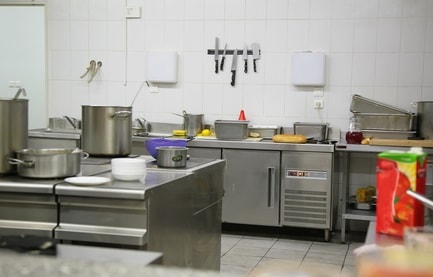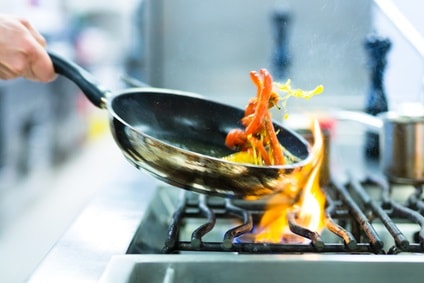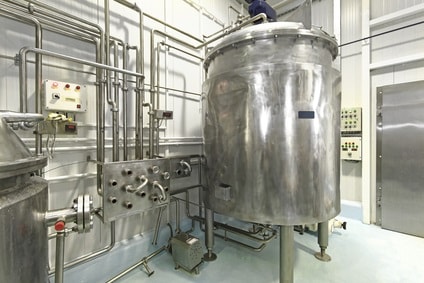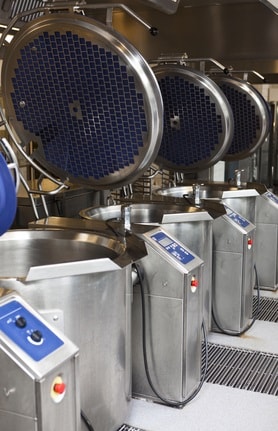Complete Guide to the Selection of Food Grade Stainless Steel for the Food Processing Industry


Food processors the world over are facing stricter and stricter restrictions in the form of international regulations and compliance. This is a fact that contributes to the betterment of a healthy globe, but it also comes with a tight learning curve for processors.
You see, as technology evolves and more and more facilities are making use of autonomous components for faster production times, these new pieces of equipment must be tested and confirmed as being ‘food-grade’ first, and only contain materials and finishes that have been deemed safe for use in the food industry. This means that materials, such as food-grade stainless steel, will also be put to the test during audit-time –and if they don’t fit the bill to the letter, it could mean very bad news for the producer. 
So, if you work in food production or are part of a team that designs equipment for the industry, it’s high time that you educate yourself on the potential compliance headaches that can come with surface materials. Today, we’re going to delve deep into food-grade stainless steel and the form that it must exist in when used in processing facilities.
In this guide, we’ll discuss:
When it comes to equipment surfaces used in food processing, it’s safe to say that stainless steel is the gold standard for a multitude of reasons. For one, it comes in a wide variety of finishes that serve as strong, versatile options for the most cutting-edge food processing equipment used in today’s facilities.
Here are some more reasons why food-grade stainless steel is so often used by food processors:

Of course, stainless steel won’t be found in each and every component of a food facility, but it does represent most standard finishes. Here are some of its most common applications via Alliant Metals:
In addition to the stainless steel used for food-contact surfaces and other materials, food processing equipment is also equipped with equipment nameplates, which convey essential information such as the product name, health and safety warnings, and important equipment data. Stainless steel equipment nameplates are the preferred choice in the food processing industry, thanks to stainless steel’s antibacterial properties, excellent resistance to dents, scratches, and stains, and superior performance in highly caustic or acidic environments.
Depending on the specifications of the facility and product, stainless steel finishes can also be used for a myriad of other tools and equipment. As you can see by the above applications, its versatile, ultra-smooth surface is appropriate for all kinds of materials and temperatures, whether the food is hot or cold, or in liquid or solid forms.
Because there are roughly 150 grades of stainless steel on the market today, it can be very easy to make the mistake of selecting a finish that doesn’t meet all FDA requirements. Having said that, many of the finishes may look similar, but in reality, they are very different when it comes to what they can handle on a day-to-day basis.
Generally speaking, food-grade stainless steels boast surfaces that are much less permeable – and much smoother – than the others. For example, these special forms of stainless steel must be able to withstand acids, alkalis, and chlorides, such as salt, which is frequently introduced to a steel’s surface during processing. If the stainless steel doesn’t have this property, then these caustic materials could contribute to premature corrosion – and, once corrosion starts to form, the unit must be taken out of circulation immediately because of its uneven surface.
For industrial food applications, where this damaging corrosion is more prevalent, producers may make the choice to put the stainless steel through an electropolishing treatment. This one-time treatment enhances the acid-resistance properties, which could, ultimately, prevent corrosion that might lead to contamination.
Now that you know what types of stainless steel finishes make for food-safe and/or food-grade applications, let’s take a look at the properties that every producer needs to be aware of before introducing a component into its facility: 
As stated above, there are roughly 150 different types of stainless steels available for use today, but there are only a few that are sturdy enough to be considered “food-grade.”
Though there are certain exceptions to the rule, almost all of the food-grade stainless steel is manufactured from 300 and 400-series steel. Here’s why these series are the most suitable for food production applications:
Note: The latter descriptions of both the 300- and 400-series stainless steels are important to pay attention to, as not every stainless steel component should have magnetic–or non-magnetic– properties in its application. If you have plans of purchasing a piece of stainless steel equipment, first ensure that its magnetic properties will fit well and/or not disrupt surrounding equipment or components.

Let’s take an even closer look at the options that are available for processors within the 300 and 400 stainless steel series:
Another thing to note is that it’s common to see another set of numbers beside the grade, for instance, “18/8”; this is meant to stand for the stainless steel’s chromium and nickel contents.
If you are looking for a super-sturdy commercial food-grade stainless steel, then the higher these numbers, the better. As you know, nickel prevents rusting, but it is not always included in high levels as only certain amounts of it can be consumed per day safely, especially if the person who is consuming the food has an allergy to the element. These levels are yet another aspect to consider when selecting the stainless steel that will most safely integrate into your food production facility.
Once the appropriate stainless steel is selected, it’s time that you take pains to gain a working knowledge of your facility’s food-grade surfaces, whatever form they may be in.
From the moment your facility integrates its new stainless steel components, it’s key that you establish a clear, concise cleaning and maintenance plan. Of course, if you are working in commercial food production, then you will already be cleaning the stainless steel regularly in order to adhere to regulations, but the routine cleansing should not stop there. 
Depending on the variety of food-grade stainless steel selected and the food that is encountering the finish, you will choose from this list of appropriate cleaning methods:
Before forming your cleaning plan, be sure that you get advice from your vendor on what works best on your finish – and also be sure that you double-check regulations in order to see what cleaning agents can be used in your processing facility.
If you have taken the care to select a stainless steel that can withstand the environment of your production line, then you shouldn’t have to fear corrosion too much. But, if you don’t maintain its finish, then you could end up causing some degradation yourself.
One of the most common mistakes that those who are new to working with food-grade stainless steel make is that they clean its finish with a plain steel brush. Although you might use this on similar metal surfaces at home, it should never be used on stainless steel, especially chromium-rich food-grade stainless steel, as the coarseness of the bristles can easily break up the bonding oxide layer. This can lead to cracks, crevices, and rust that can give you compliance issues in the future.
In addition to caring for your stainless steel components, make sure that you follow any and all advice given to you by your vendor. And, because stainless steel, even the food-grade variety, can have pits and corrosion that may not be noticeable with the naked eye, it’s important that you use all of the necessary detection devices in order to ensure that your facility is in line with all binding laws and regulations.
For more information on the specifics surrounding food-grade stainless steel options and what they mean for your food equipment business, visit the following resources:
Our sales engineers are experts in automatic asset tracking, tagging and identification,a nd can answer all your questions. Get in touch now.
Lets Talk ›